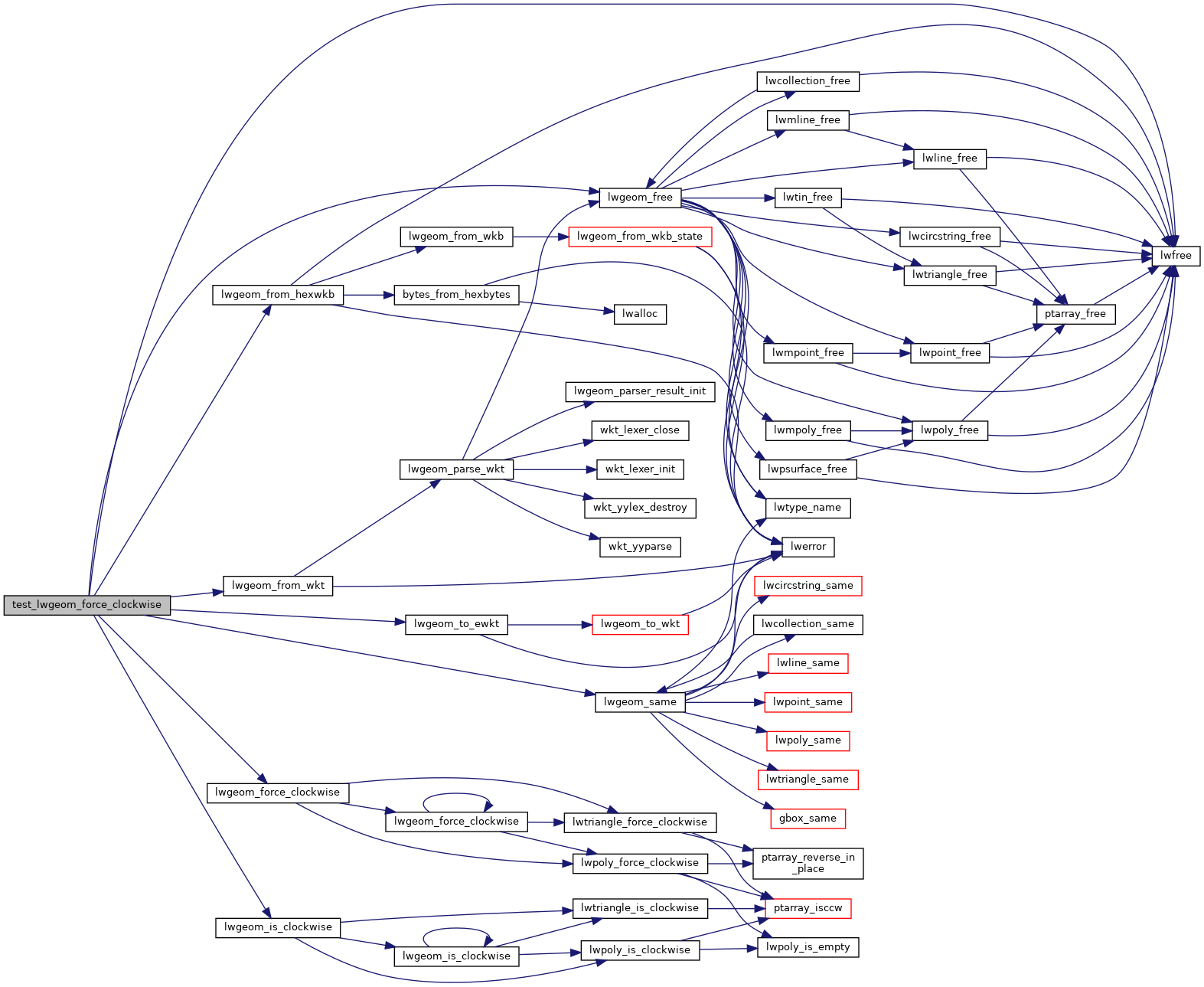◆ test_lwgeom_force_clockwise()
|
static |
use same check instead of strcmp to account for difference in endianness
Definition at line 746 of file cu_gserialized1.c.
777 geom = lwgeom_from_wkt("POLYGON((0 0,10 0,10 10,0 10,0 0),(2 2,2 4,4 2,2 2),(6 2,8 2,8 4,6 2))", LW_PARSER_CHECK_NONE);
789 geom = lwgeom_from_wkt("POLYGON((0 0,0 10,10 10,10 0,0 0),(2 2,4 2,2 4,2 2),(6 2,8 4,8 2,6 2))", LW_PARSER_CHECK_NONE);
802 in_ewkt = "0103000000010000000500000000917E9BA468294100917E9B8AEA2841C976BE1FA4682941C976BE9F8AEA2841B39ABE1FA46829415ACCC29F8AEA284137894120A4682941C976BE9F8AEA284100917E9BA468294100917E9B8AEA2841";
char lwgeom_same(const LWGEOM *lwgeom1, const LWGEOM *lwgeom2)
geom1 same as geom2 iff
Definition: lwgeom.c:573
LWGEOM * lwgeom_from_hexwkb(const char *hexwkb, const char check)
Definition: lwin_wkb.c:849
void lwgeom_force_clockwise(LWGEOM *lwgeom)
Force Right-hand-rule on LWGEOM polygons.
Definition: lwgeom.c:37
LWGEOM * lwgeom_from_wkt(const char *wkt, const char check)
Definition: lwin_wkt.c:905
int lwgeom_is_clockwise(LWGEOM *lwgeom)
Ensure the outer ring is clockwise oriented and all inner rings are counter-clockwise.
Definition: lwgeom.c:65
Definition: liblwgeom.h:443
References LW_PARSER_CHECK_NONE, lwfree(), lwgeom_force_clockwise(), lwgeom_free(), lwgeom_from_hexwkb(), lwgeom_from_wkt(), lwgeom_is_clockwise(), lwgeom_same(), and lwgeom_to_ewkt().
Referenced by gserialized1_suite_setup().
Here is the call graph for this function:

Here is the caller graph for this function:
